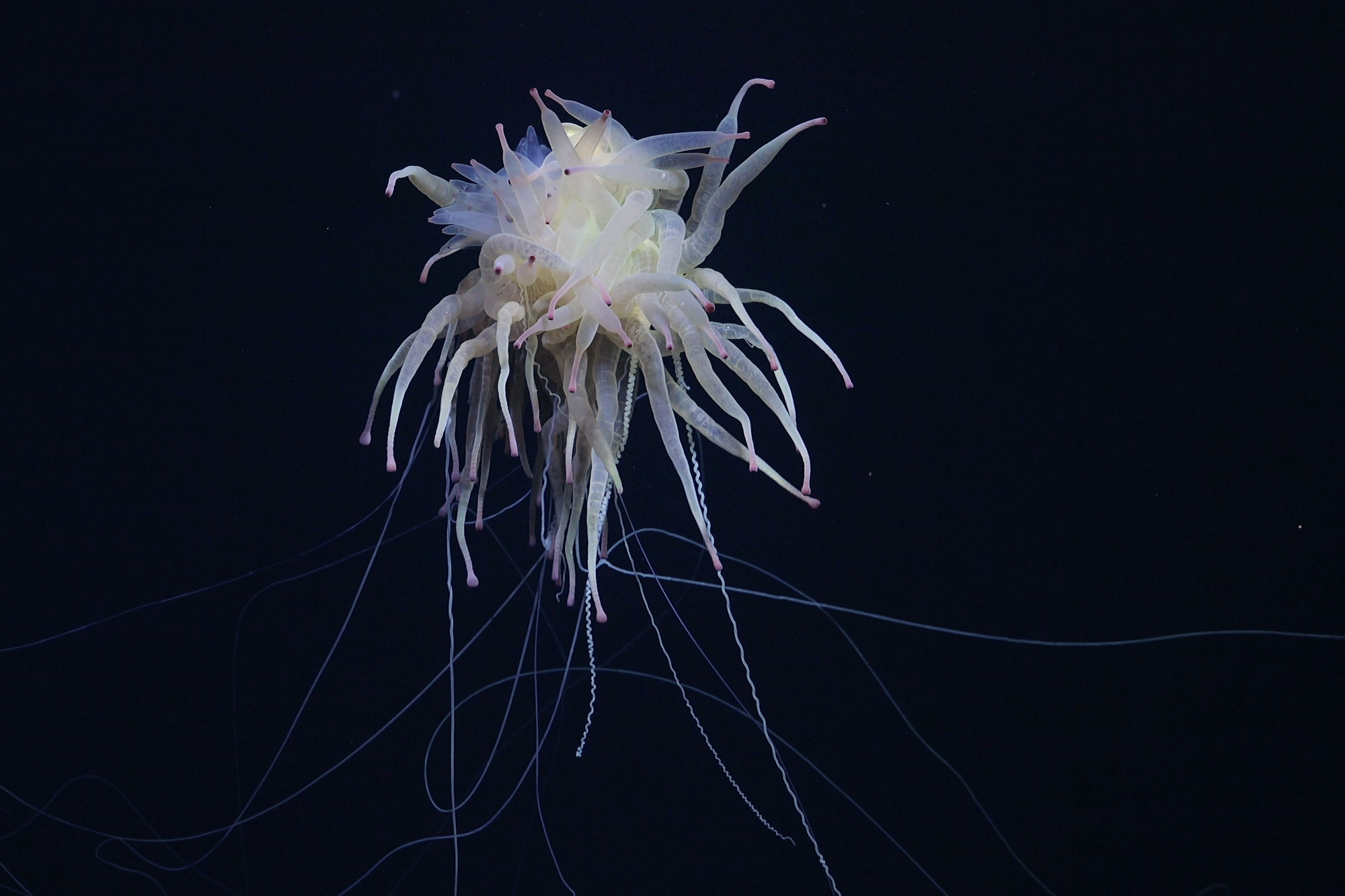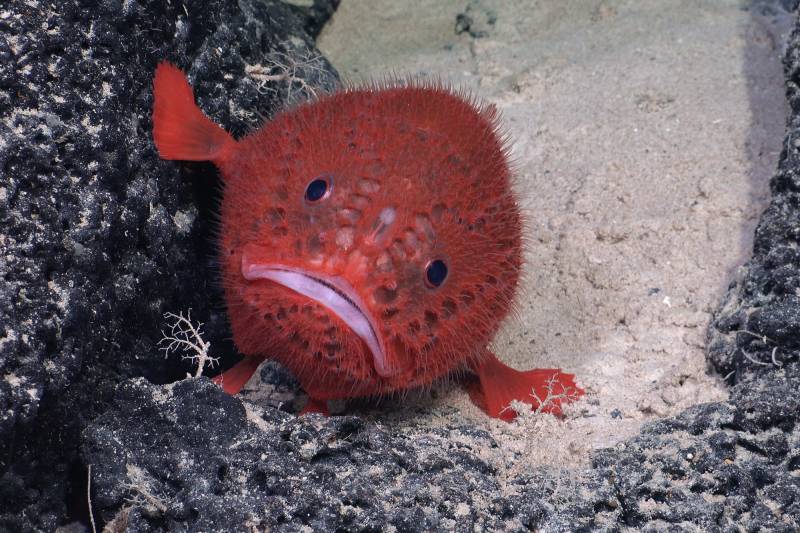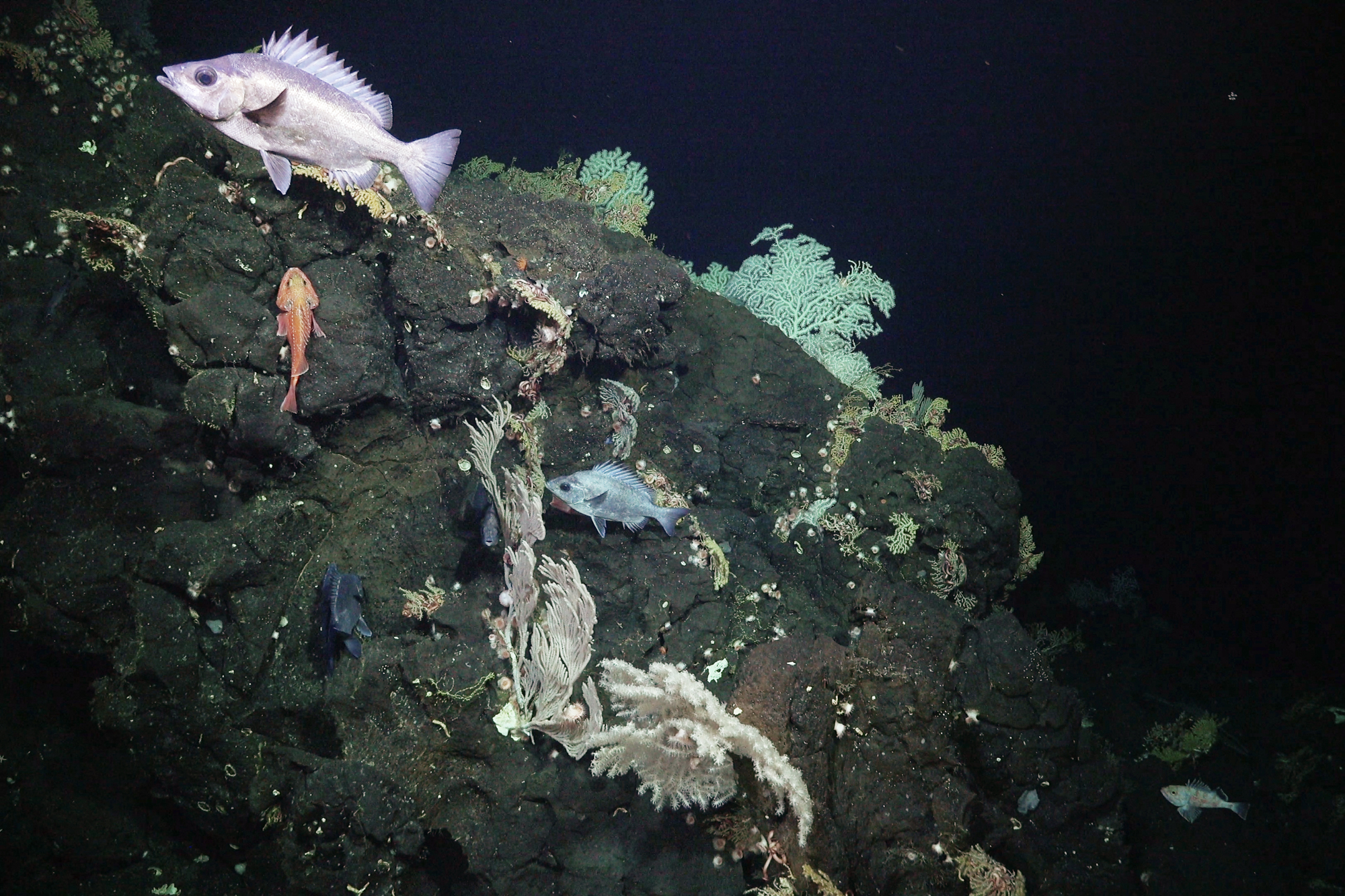A team of oceanographers led by Palo Alto-based Schmidt Ocean Institute discovered twenty possible new species of ocean life across ten seamounts during an ocean expedition on the Nazca Ridge in the Pacific Ocean, 900 miles off the coast of Chile.
One of the newly discovered and mapped seamounts located on the southern part of the Nazca Ridge underwater mountain chain is over two miles tall and supports a thriving deep-sea ecosystem, including sponge and coral gardens. The coral garden is the size of three tennis courts and harbors diverse marine life, including rockfish, brittle stars, and king crabs.

In addition to discovering and mapping the new seamount, the team also captured the first-ever live footage of a rare Promachoteuthis squid, a rare species previously known only from dead specimens found in nets. They also documented a ghostly white Casper octopus, a species seen for the first time in the Southern Pacific, and two rare Bathyphysa siphonophores, commonly known as flying spaghetti monsters.

“There is so much diversity and richness below the ocean surface, specifically on the seafloor, that we’re unaware of,” said Tomer Ketter, co-chief scientist and Schmidt Ocean Institute marine technician.
Researchers aboard the R/V Falkor (too) research vessel used a remotely operated vehicle named SuBastian to capture high-quality footage and collect samples during the deep sea exploration.

Most seamounts are remnants of extinct volcanoes and are vital ocean structures that provide habitat for abundant marine life. Less than 1% of the Earth’s seamounts have been thoroughly mapped and sampled, and those of the Southeast Pacific remain some of the least explored.


